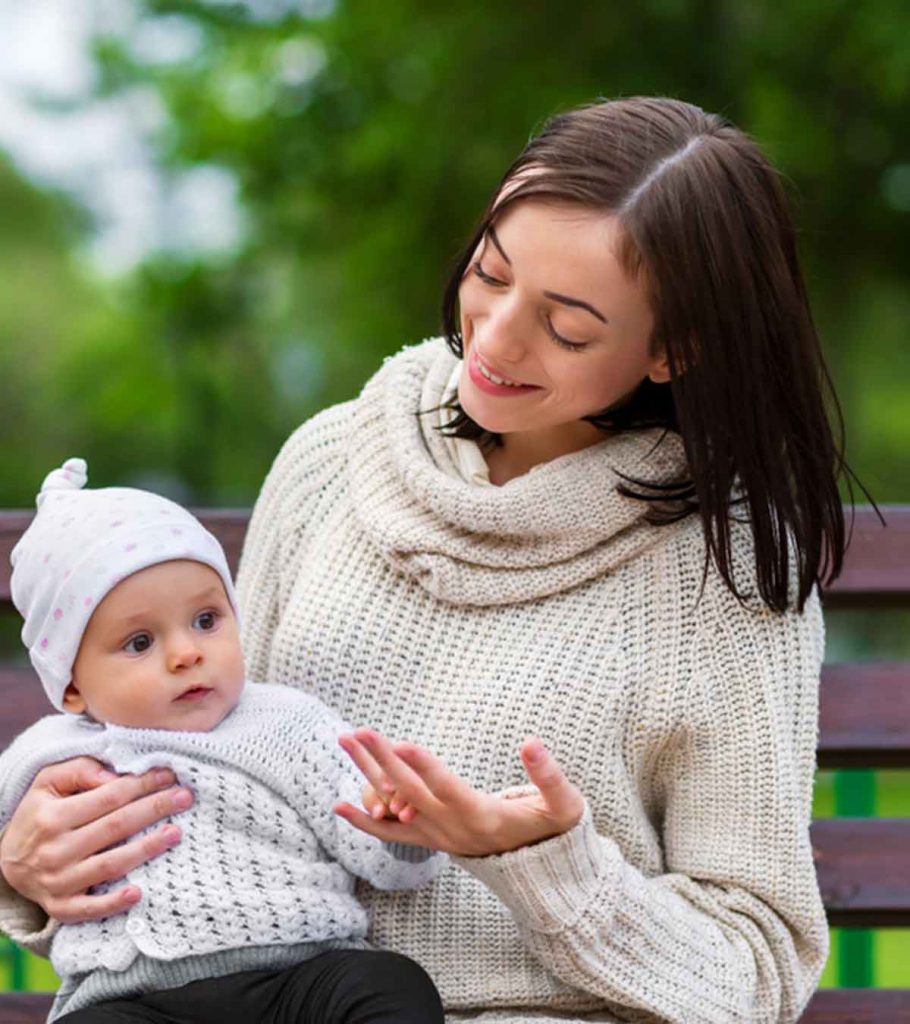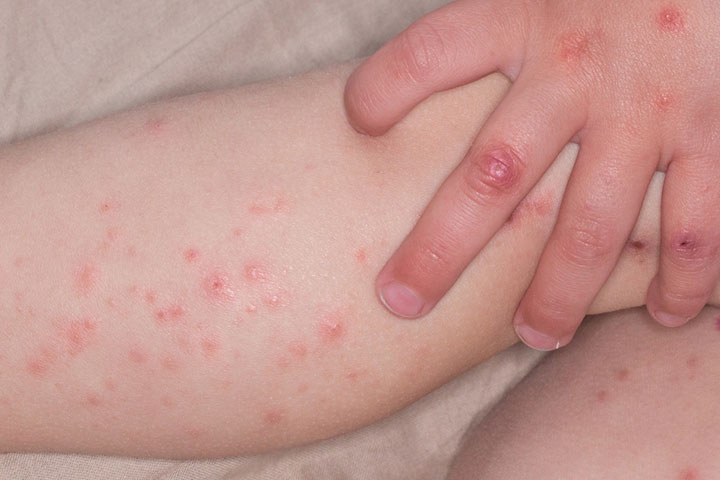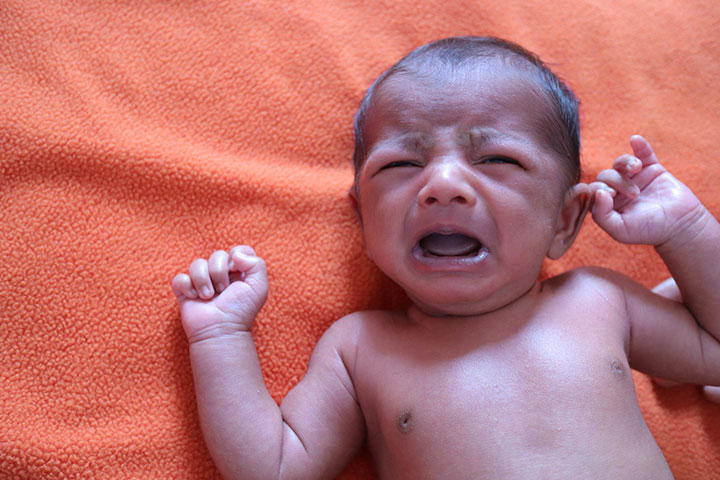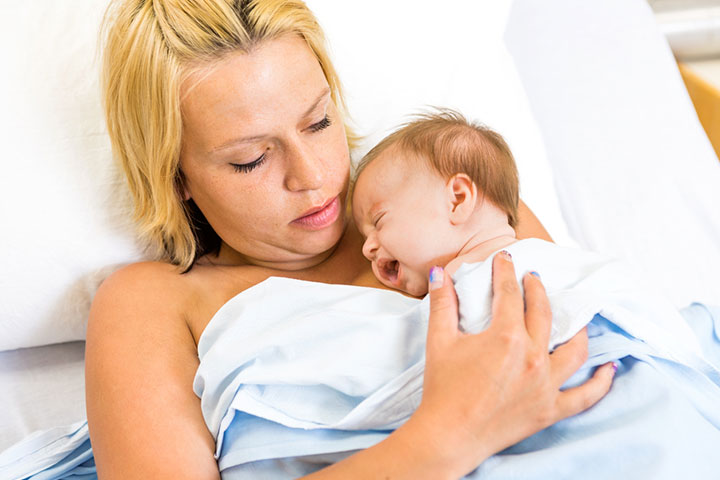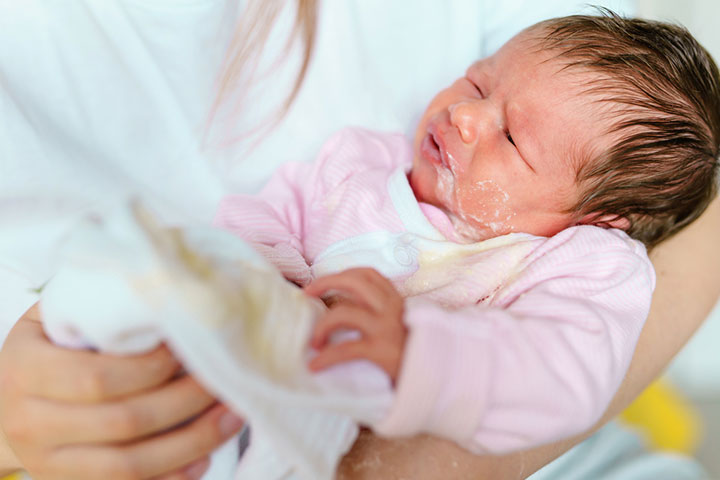There can be times you notice your baby with cold hands while the rest of the body seems normal. A baby’s hands can become colder than the rest of the body due to the surrounding temperature. However, it may also result from an underlying health condition.
While cold hands are seldom an alarm, frequent cold hands can be concerning. You need to consult your child’s pediatrician to know about any complications in such situations.
Read to know about the causes and potential treatments for cold hands in babies.
Reasons A Baby Has Cold Hands
The causes for cold hands in babies can vary from a simple reason, such as the cold temperature outside, to a complicated underlying medical condition. Thus, it is important to monitor your child closely and understand why your baby has cold hands. Here are a few possible reasons.
1. Immature thermoregulation
Newborns would be unable to maintain their core body temperature without external thermal protection. Due to their high body surface area to weight ratio, babies tend to lose heat by evaporation (1).
This is why it is advised to cover your baby’s head, legs, and hands with an extra layer to prevent loss of heat from the body by evaporation after birth.
2. Blood circulation
As a baby’s blood circulatory system is underdeveloped, the blood may not be able to carry the oxygen to the hands and legs effectively. This lack of oxygen may cause cold hands in babies and may manifest through a bluish discoloration of the skin, a common condition called acrocyanosis. Other parts such as ears, nose, lips, and nipples may also be affected.
Factors such as cold climate and low body mass index may increase your baby’s risk of developing acrocyanosis. Episodes of acrocyanosis usually subside as soon as the baby’s body gets used to the blood circulation (3).
3. Sepsis
Sepsis is the body’s ultimate response to an infection. Identifying sepsis at an early stage is crucial to prevent serious consequences. Sepsis is often preceded by an infection, such as a urinary tract infection, pneumoniaiXA bacterial or viral infection causing inflammation in the air sacs, or skin or bone infection.
Along with cold hands and feet, sepsis is also characterized by low fever, fast heart rate, rapid breathing, pale skin, nausea, vomiting, dry diapers for more than 12 hours, etc. If you spot any of the above symptoms, it is important to seek medical assistance, as untreated sepsis can lead to mortality (4).
According to the MSD Manual, early-onset sepsis, occurring within the initial three days after birth, carries a mortality rate ranging from 3-40%. Late-onset sepsis, manifesting after the first three days of neonatal life, has a mortality rate between 2-20%. The fatality rate is 2 to 4 times higher in low birth weight (LBW) infants.
4. Fever
Cold hands could also be a symptom of fever. If your baby’s body temperature is above 100.4℉, they might be suffering from fever. A fever is usually a sign of your baby’s body trying to fight off a bacterial or viral infection. If your baby’s forehead is hot, but their hands are cold, do not worry, as it is a common sign of fever in babies. According to Dr. Joanna Perdomo, MD, MPH, FAAP, a pediatrician at Nicklaus Children’s Pediatric Care Centers, Florida, “Fever can cause cold hands and feet, as the blood is sent away from the limbs to the body’s core organs to fight off what is causing the fever. Treating the fever should help the cold hands and feet warm up.”
Other general symptoms of fever include:
- Shivering or chills
- Fatigue or tiredness
- Lethargy
- Feeding issues
- Cold (sneezing, runny nose, or sore throat) (5)
- Headache
- Body ache
A mild fever might subside on its own. Keep monitoring their temperature and give them a cold compress occasionally.
5. Hand, foot, and mouth disease (HFMD)
HFMD is a contagious infection seen in babies. It is generally not serious but can be uncomfortable. It usually starts with cold-like symptoms, such as loss of appetite, coughing, high temperatures, and a non-itchy rash on the hands, fingers, feet, buttocks, and knees.
Cold hands could be one of the last symptoms of hand, foot, and mouth disease. Take your baby to the doctor if you notice cold hands and feet, signs of dehydration, and rashes that become swollen and red and discharge pus (6). As this is a viral infection, it would subside within a week. You may ask your baby’s doctor to prescribe some fever medications.
6. Meningitis
Meningitis is an inflammation of the lining around the brain and spinal cord caused by a bacterial or viral infection. Cold hands and feet are among the first symptoms of meningitis. Diagnosing this disease is a challenge as the initial symptoms appear like a common cold or flu. The condition, however, deteriorates rapidly.
If your baby shows any of the following symptoms, take them to your pediatrician.
- High temperature
- Extreme sleepiness
- Difficulty breathing
- Extreme shivering
- Vomitings
- Refusal to feed
- Muscle aches (7)
7. Other causes
Your baby may also have cold hands due to some other underlying issues. If your baby’s body has problems related to blood circulation, it might show additional signs such as blue lips and blotches on the skin. These could be due to
- CongenitaliXA condition or situation existing right from birth heart diseases (8).
- Lung and blood circulation issues.
If your baby has constant cold hands and shows other signs and symptoms, it is best to immediately take them to your pediatrician.
Treatment For Babies With Cold Hands
The treatment for cold hands depends on the underlying cause. If your baby has occasional cold hands, do not worry, as this is normal until they are able to control their body temperature.
Here are a few common treatment options.
- If your baby’s hands feel cold, check their torso and stomach areas. As long as the central parts of the body are warm, you need not worry. Cover your baby’s head with a cap and wrap them in extra layers. Also, put on mittens and socks for their hands and legs. Check your baby’s hands after 20 minutes to see if they are warm.
- Talk to your pediatrician about the Kangaroo care method. This method can help you provide the natural warmth your baby’s body needs. Remove all your baby’s clothing except the diaper, place your baby against your chest, and cover yourself with a warm blanket (9).
- Check the room temperature of your baby’s nursery. The ideal room temperature should be between 68°F to 72℉. A cold room may increase the risk of cold stress in babies due to vasoconstriction that occurs to prevent heat loss (9) while an overheated room can increase the risk of sudden infant death syndrome in babies.
- If your baby shows any abnormal symptoms, it is best to consult your doctor. They may run some tests and recommend the best treatment.
When To Call The Doctor?
The normal body temperature for a baby is about 97.52℉ (12). If your baby’s hands feel cold, check their body temperature and cover them in layers. However, if this doesn’t warm their hands, and you find the following symptoms, seek medical attention immediately.
- Vomiting
- Diarrhea
- Central body parts becoming cold
- Lethargy
- Unexplained rashes
- SeizuresiXA sudden, temporary, and uncontrollable electrical activity in the brain
- Fussiness
- Loss of appetite
